Taman Ayun Temple is an important part of Bali’s history. It is a remnant of the once powerful Mengwi Kingdom, a place of worship for the kings and queens of old. It is the second largest temple complex on the island today and remains an integral part of Bali’s subak water-sharing system.
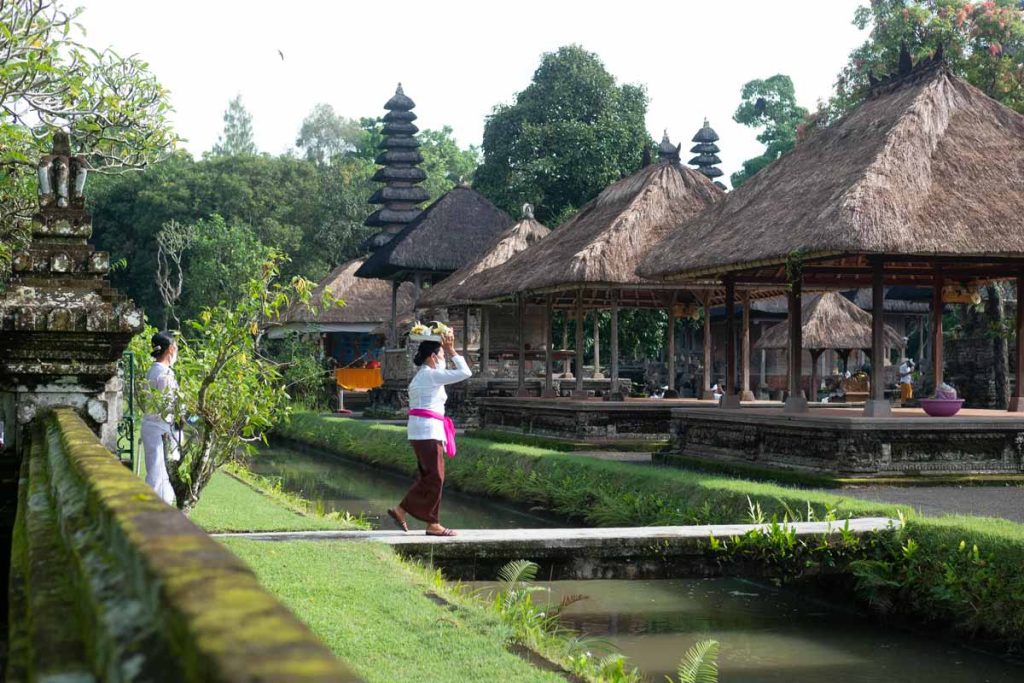
Manicured to near perfection, with its cleanly cut lawns and tree-lined pathways, it comes as no surprise that Pura Taman Ayun is of royal ownership. This is a centuries old temple, built in 1634 AD (or 1556 on the çaka calendar) by the King of Mengwi at the time, I Gusti Agung Putu (later titled Cokorda Sakti Blambangan), made as a compound to honour the spirits of his royal ancestors — known as a Pura Kawiten, a type of family temple . Mengwi was one of the original kingdoms that emerged as a result of the fall of the Gegel Dynasty, a vassal state that was tied closely to the Hindu-Javanese Majapahit Empire. When Gegel fell, Bali was split into nine separate kingdoms including: Klungkung, Buleleng, Karangasem, Mengwi, Badung, Tabanan, Gianyar, Bangli and Jembrana. Many of these represent the nine regencies found across Bali today.
Throughout most of the 17th and 18th centuries, the Kingdom of Mengwi remained powerful and respected across Bali and Java. It was only in 1891, after wars with neighbouring kingdoms, that Mengwi was swallowed by Badung. Nevertheless, sites like Taman Ayun Temple continue the name and legacy of the kingdom and all of its glory.
Though built centuries ago, Taman Ayun has had several restorations and renovations — the last major renovation being in 1937. Today it is an exquisitely maintained complex, looked after by the royal family, lending to its name Taman Ayun meaning ‘beautiful garden’.
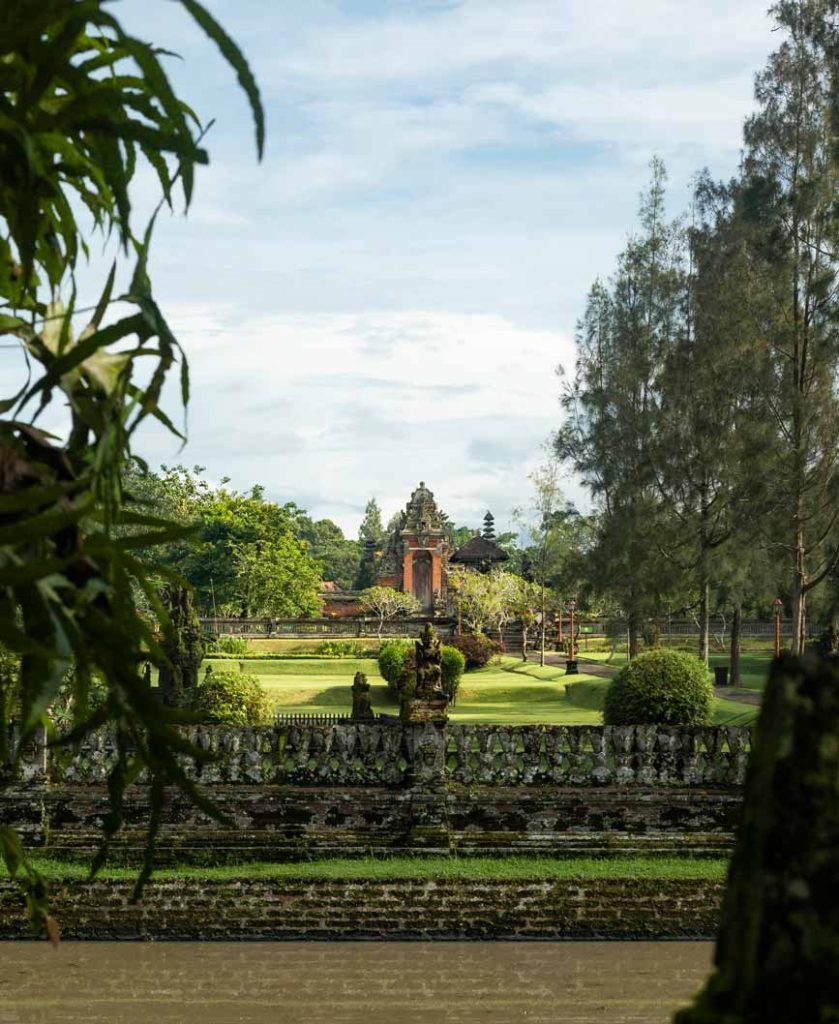
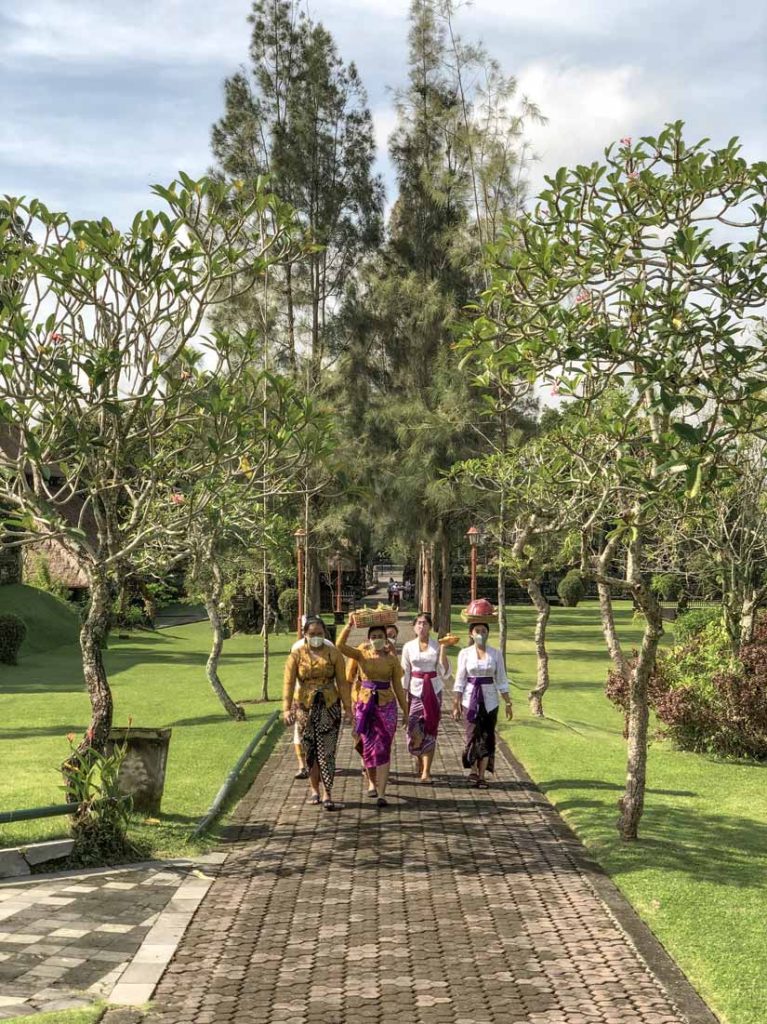
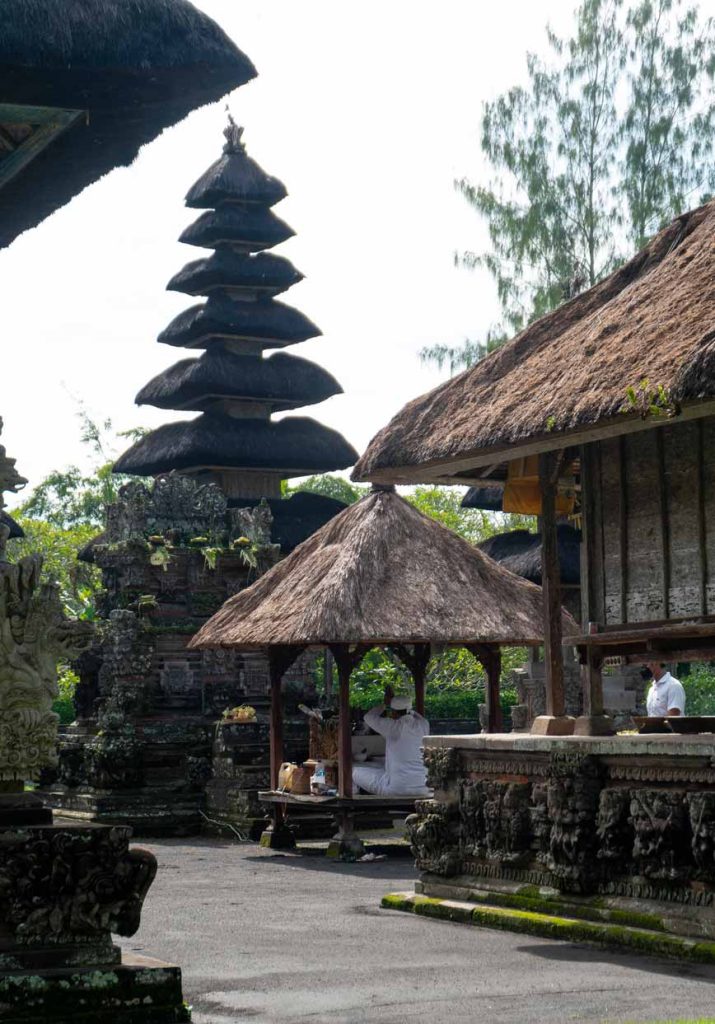
Like many of Bali’s holy temples it consists of three main sections: an outer courtyard, the jabaan or Nista Mandala; the middle courtyard, the jaba tengah or Madia Mandala; and the inner sanctum, the jeroan (sometimes jaba jero), or Utama Mandala. These are listed in order of their sanctity, the jeroan being the most holy area reserved for worshippers. As you journey through to the next courtyard, each separated by a candi bentar or split gate, the landscape progressively gets higher, so the inner courtyard is the highest section.
What makes Taman Ayun Temple particularly unique in terms of its aesthetics is how water is part of its design. The entire temple compound is surrounded by canals, or more accurately a moat, as is the inner sanctum of the temple where the rows of meru shrines are found. These shrines found in the jeroan are of different sizes, or heights rather, with shrines ranging from two tiers all the way up to eleven tiers. Whilst the temple was built to venerate the deified ancestors of the Mengwi dynasty, the Hindu gods are also honoured here.
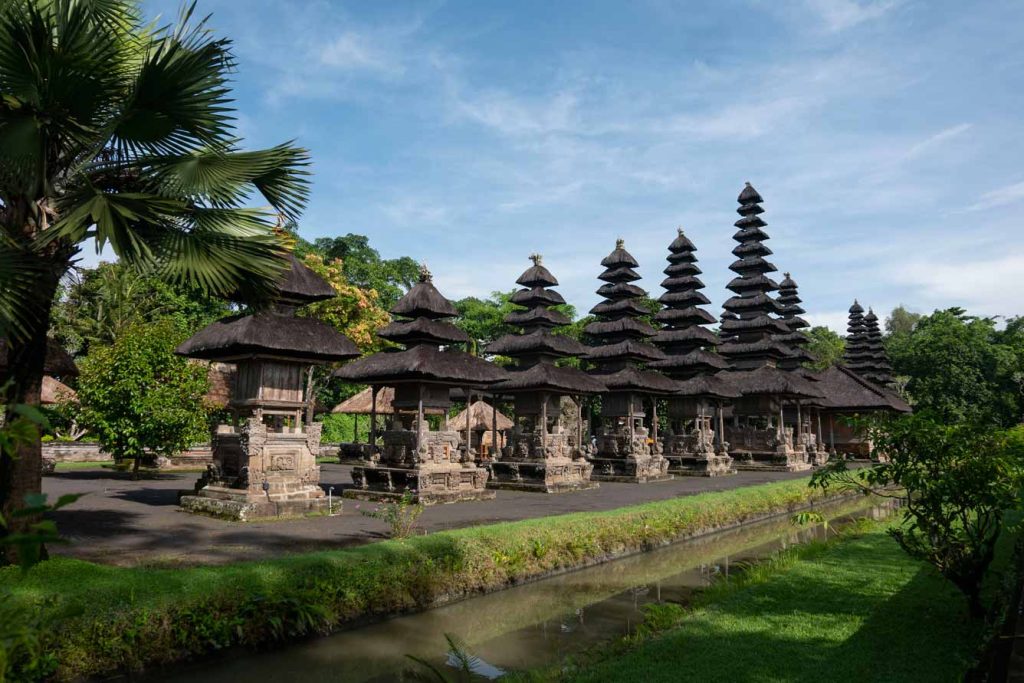
This pond and the temple itself are integral to the subak water-sharing system in the area, said to feed water into three subaks in the Badung Regency. This is why Taman Ayun Temple was included in the UNESCO World Heritage list alongside Ulun Danu Batur and Lake Batur, as integral elements of the irrigation of rice fields around Bali. It is listed as ‘the largest and most impressive architectural edifice of its type on the island’.
Outside the main functions of the temple, you will find a wing of the complex that are comprised of an art gallery as well as a theatre, which shows the history of Taman Ayun Temple as told by the Mengwi royal family. This circles back to the outer courtyard towards a wantilan, an open pavilion used traditionally as an amphitheatre where cockfighting would take place, but now used more for gatherings and musical performances.







